- Resources
- article
Check your Tuna
GoodFish has evaluated Australia’s most popular canned tuna brands' sustainability.
How does your canned tuna stack up?
Canned tuna is a staple of the Aussie pantry. In the last financial year alone, we imported nearly 45 million kilos of it — that’s nearly the weight of the Sydney Harbour Bridge (Fisheries and Aquaculture Outlook, 2023).
Our most frequently asked question is “which canned tuna should I buy?”, so we put together our best advice on how you can Check your Tuna and see how your tuna stacks up.
Important: There are many unknowns with canned tuna. A lot of tuna comes from high seas fisheries, which are far from shore and have complex supply chains. To address these uncertainties we developed a simpler environmental standard (different from our GoodFish Sustainable Seafood Guide) based on respected existing independent assessments of international tuna fisheries including the Monterey Bay Aquarium’s Seafood Watch program.
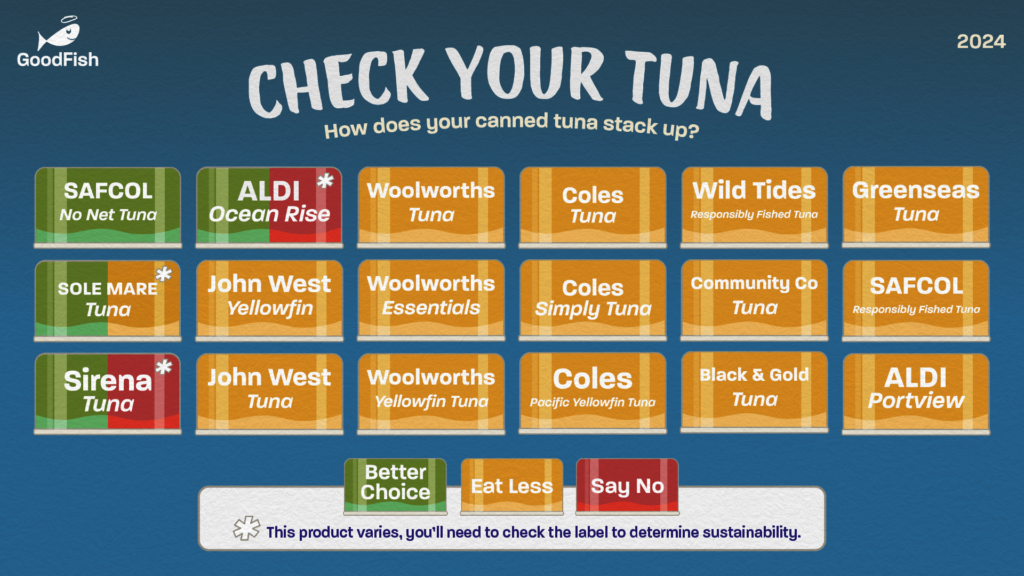
Green
SAFCOL No Net Tuna
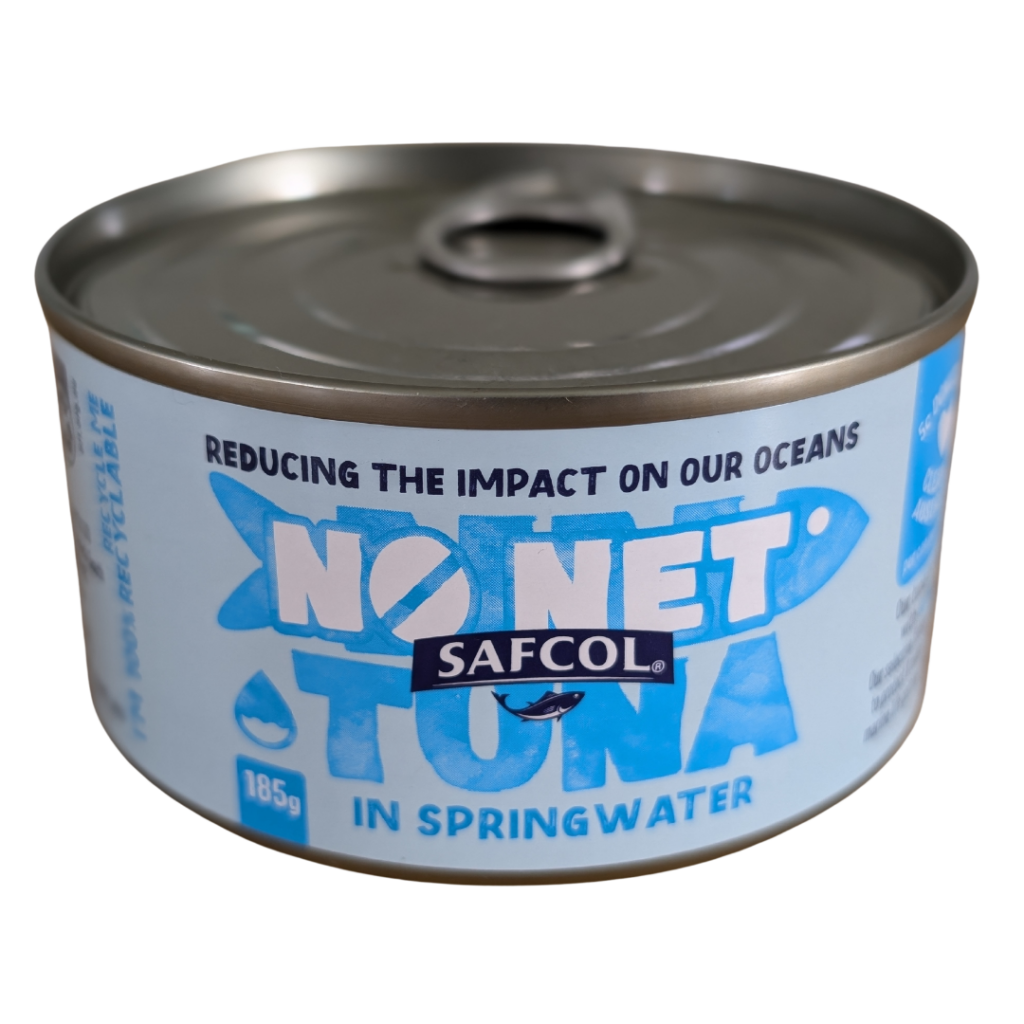
This skipjack tuna is caught from a healthy population, using line fishing methods that have a minimal impact on other marine wildlife or the wider ecosystem.
Sole Mare *Pole and Line
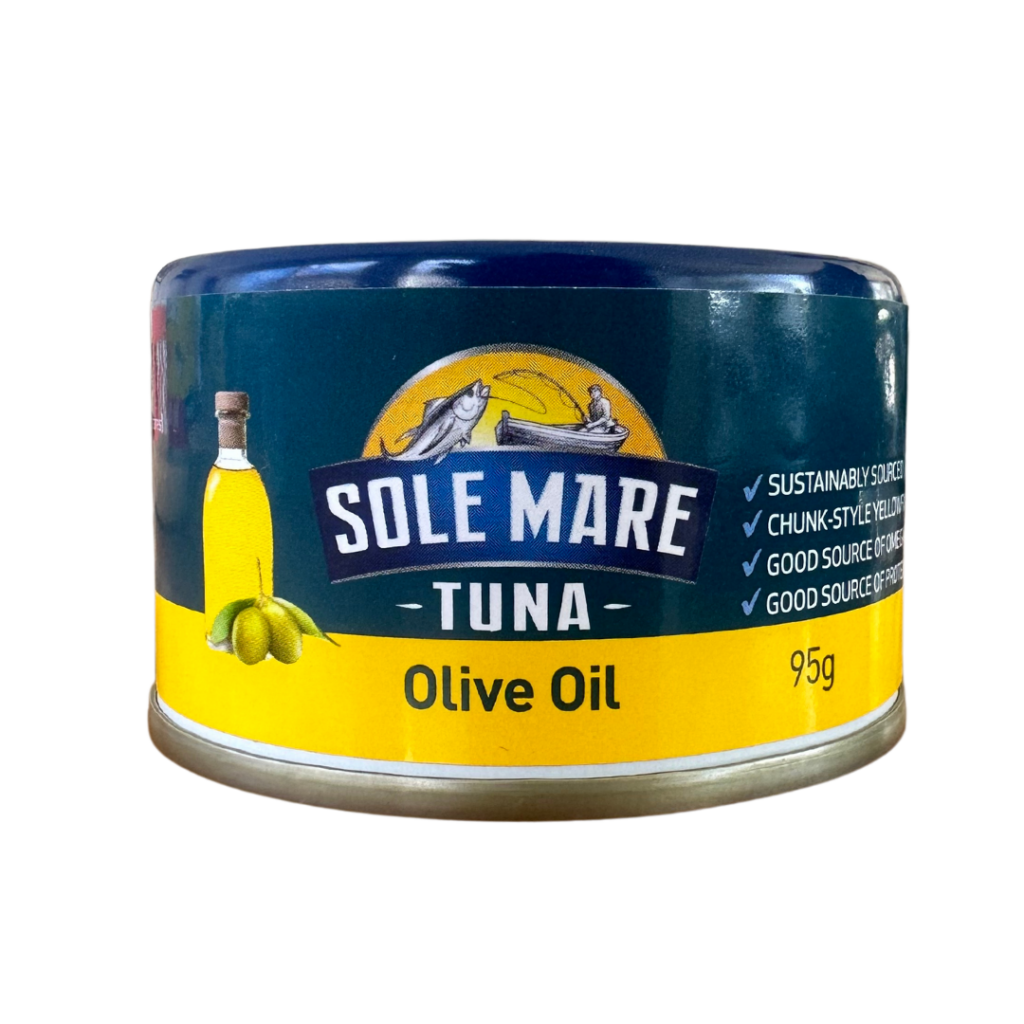
*This ranking only applies to Sole Mare’s products caught using pole and line methods. You can find this information on the lid of the can.
This yellowfin tuna is caught from a healthy population in the Western Pacific Ocean, using line fishing methods that have a minimal impact on other marine wildlife or the wider ecosystem.
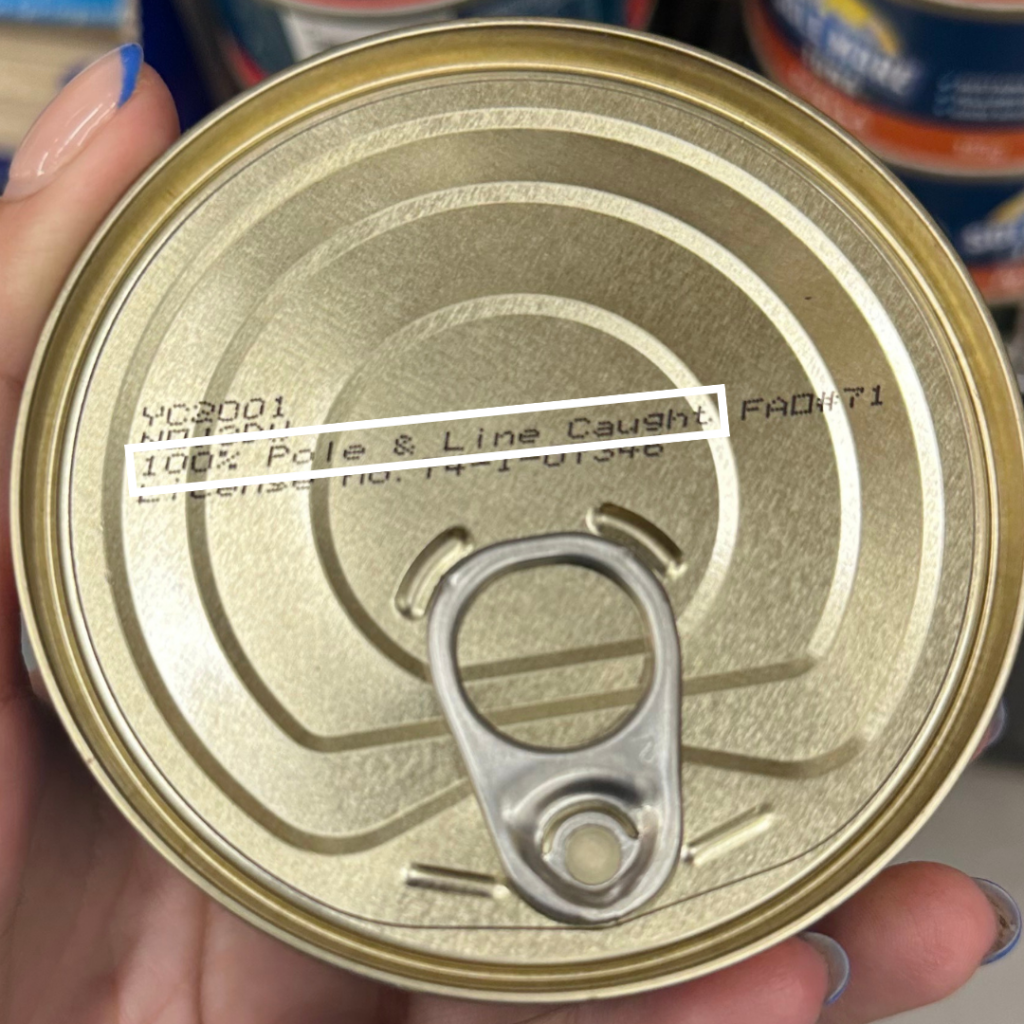
Sirena *FAO 71
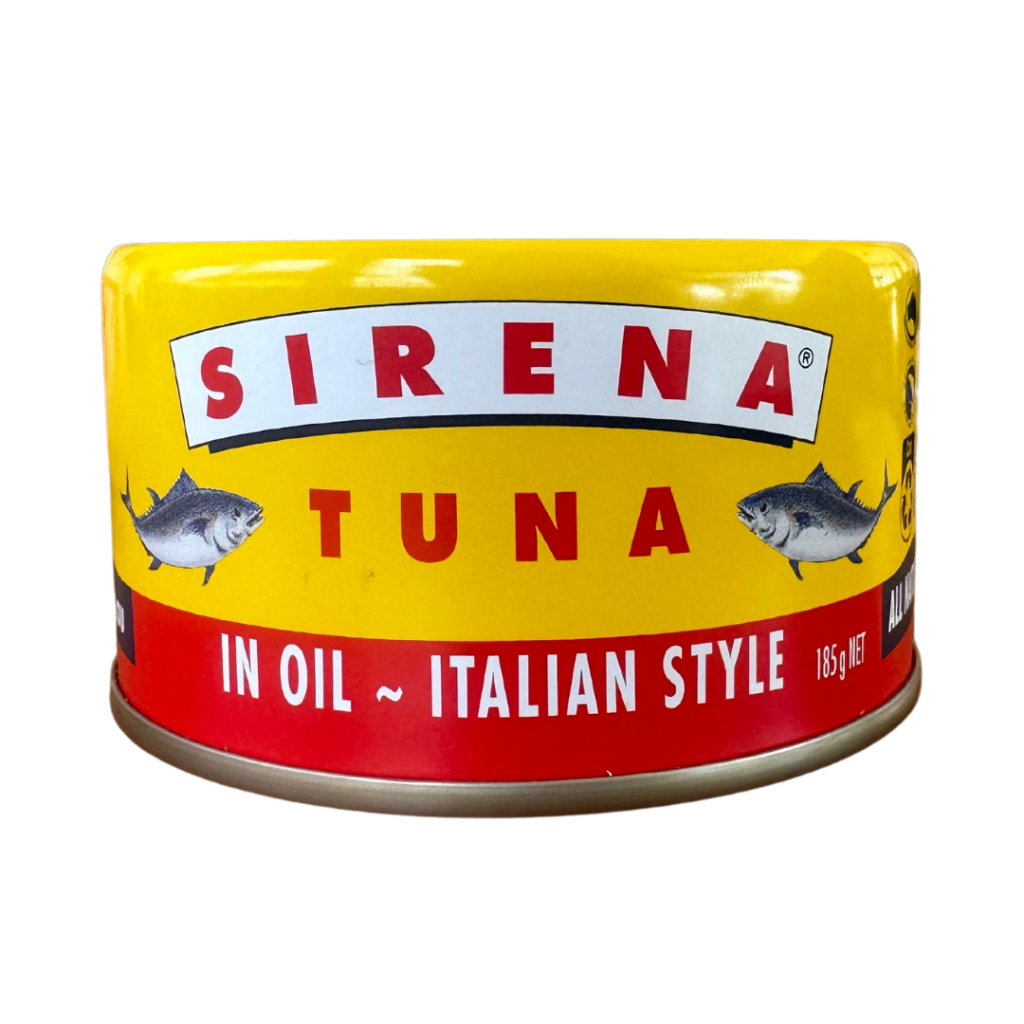
*This ranking only applies to products containing tuna caught within FAO area 71. You can find this information on the lid of the can.
This yellowfin tuna is caught from a healthy population in the Western Pacific Ocean, using line fishing methods that have a minimal impact on other marine wildlife or the wider ecosystem.

ALDI Ocean Rise *FAO 71
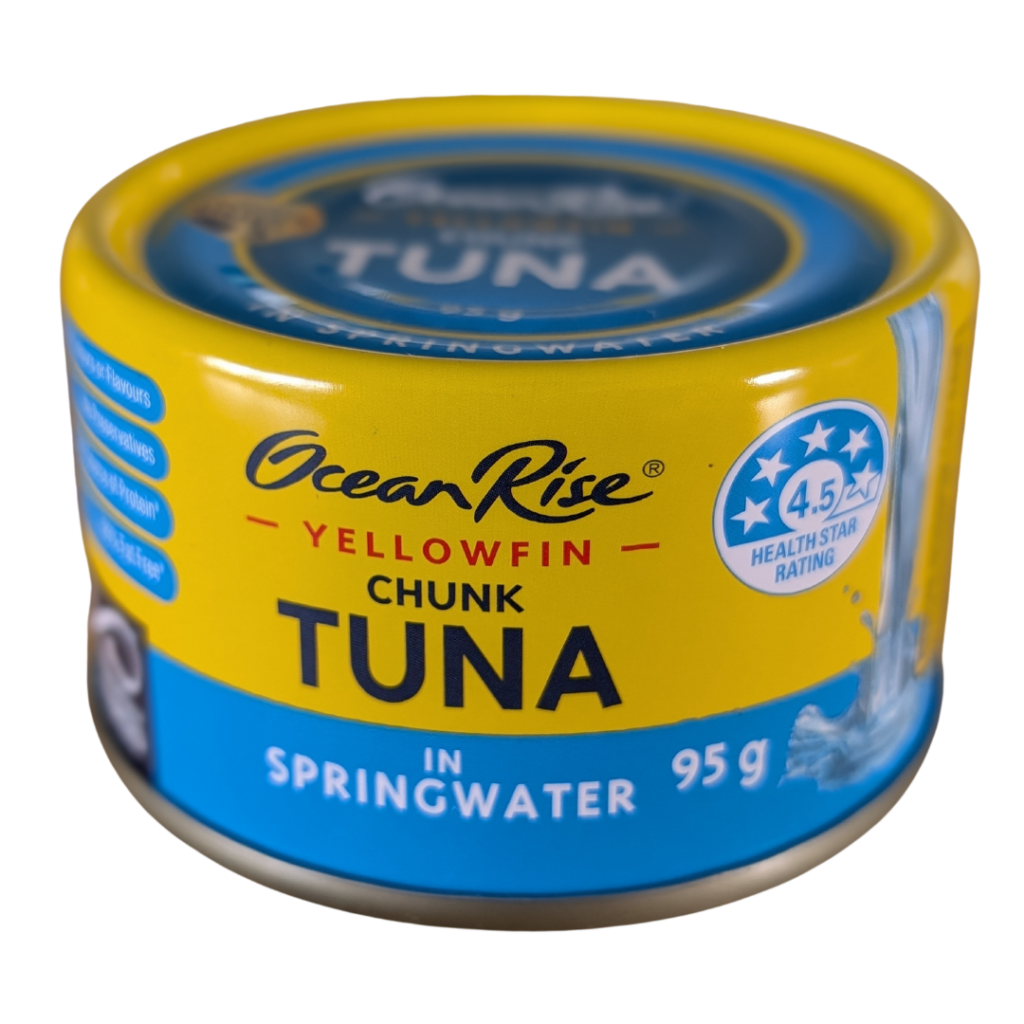
*This ranking only applies to products containing tuna caught within FAO area 71. You can find this information on the lid of the can.
This yellowfin tuna is caught from a healthy population in the Western Pacific Ocean, using line fishing methods that have a minimal impact on other marine wildlife or the wider ecosystem.
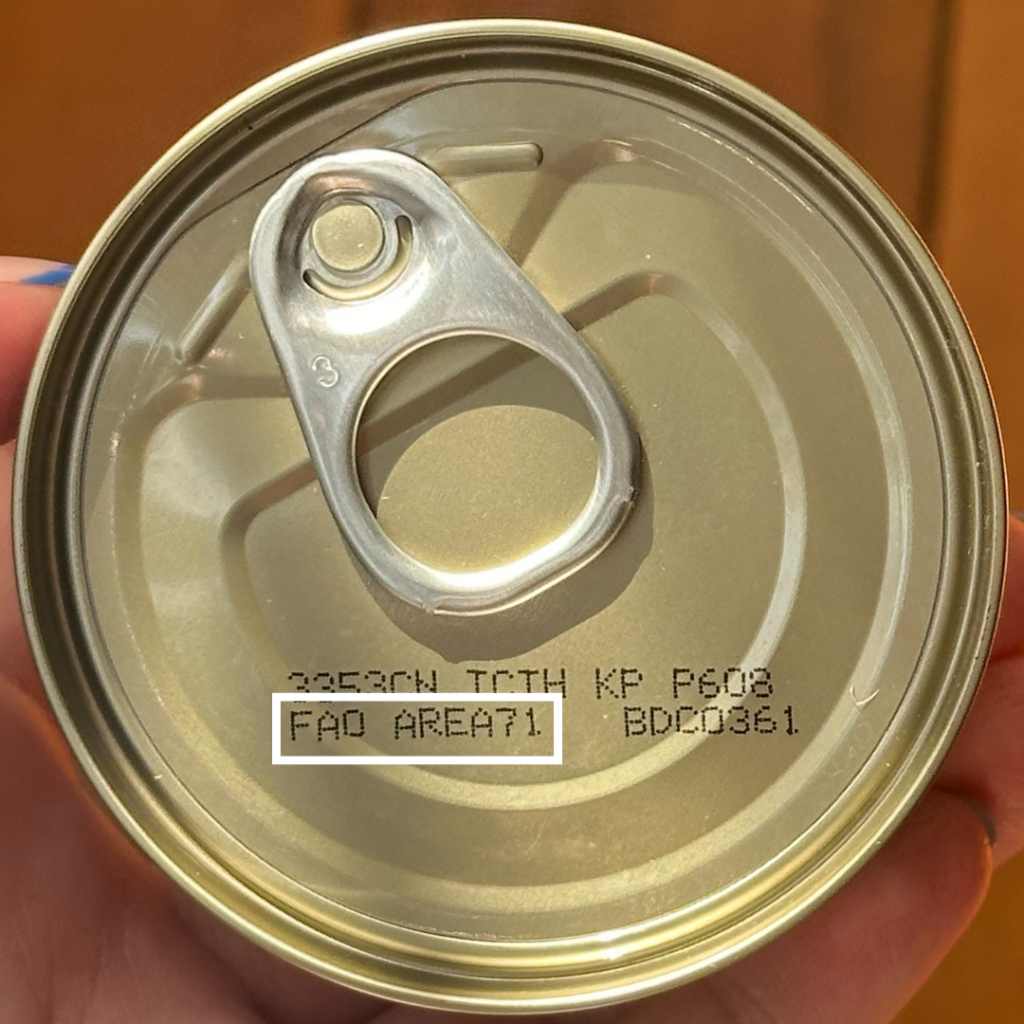
Amber
Sole Mare *FAD-free

*This ranking only applies to tuna caught using FAD-free purse seine methods. If the stamp on the lid of the can does not say “pole and line” as seen below, it fits in this category.
This yellowfin tuna is caught from healthy populations in the Pacific Ocean, using FAD-free purse seine methods that can have a moderate impact on endangered marine wildlife or the wider ecosystem.
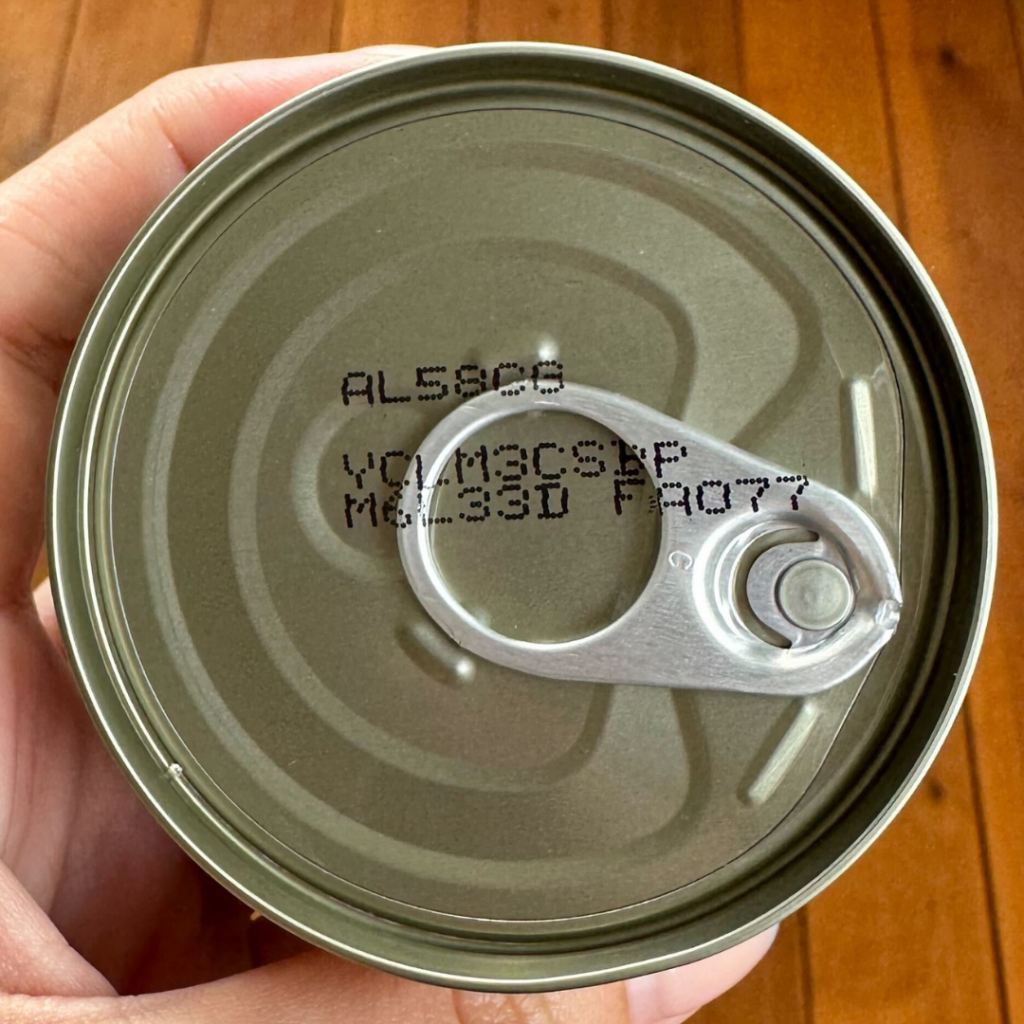
John West
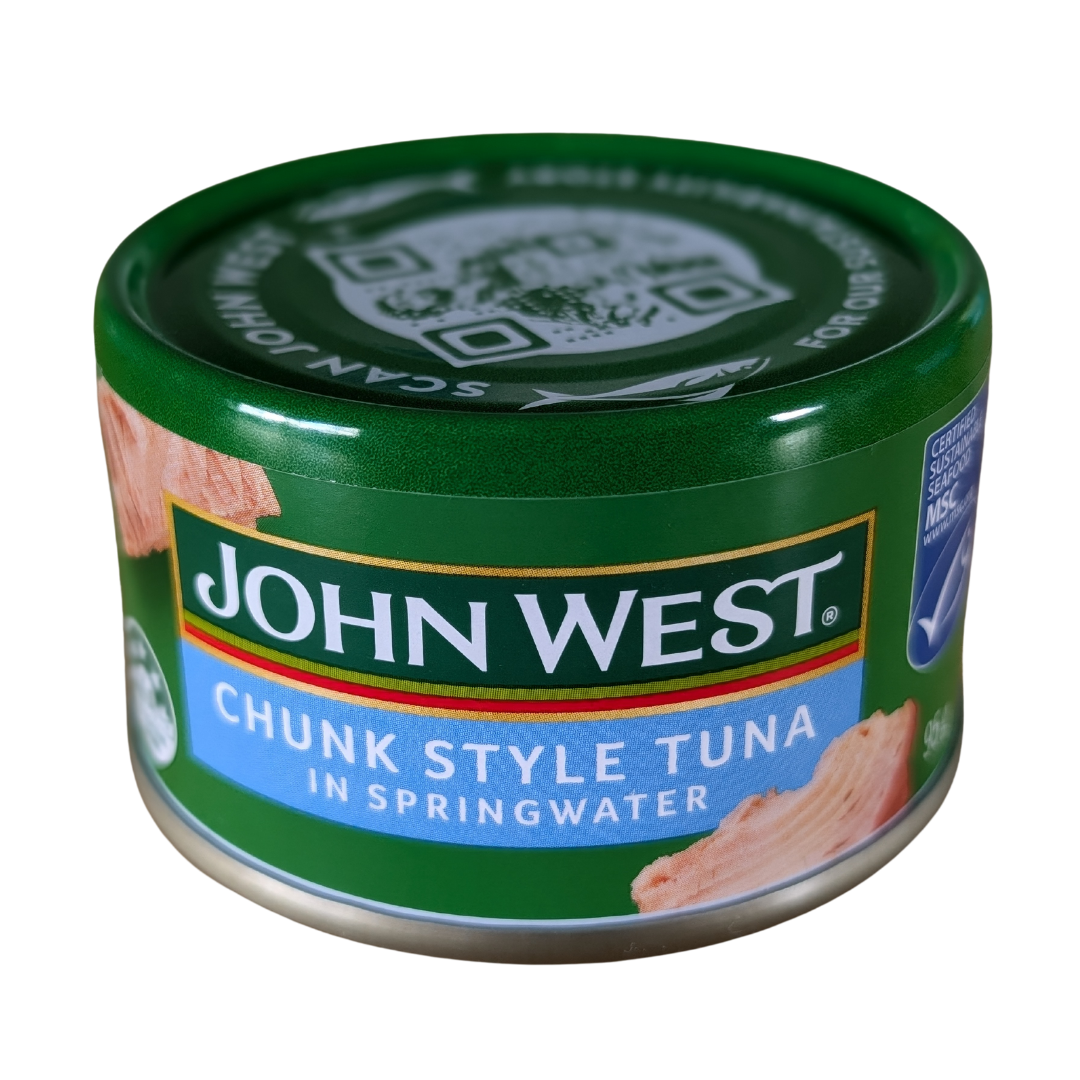
This skipjack tuna is caught from a healthy population in the Western Central Pacific Ocean or Eastern Central Pacific Ocean, using FAD-free purse seine methods that can have a moderate impact on endangered marine wildlife or the wider ecosystem.
John West Yellowfin
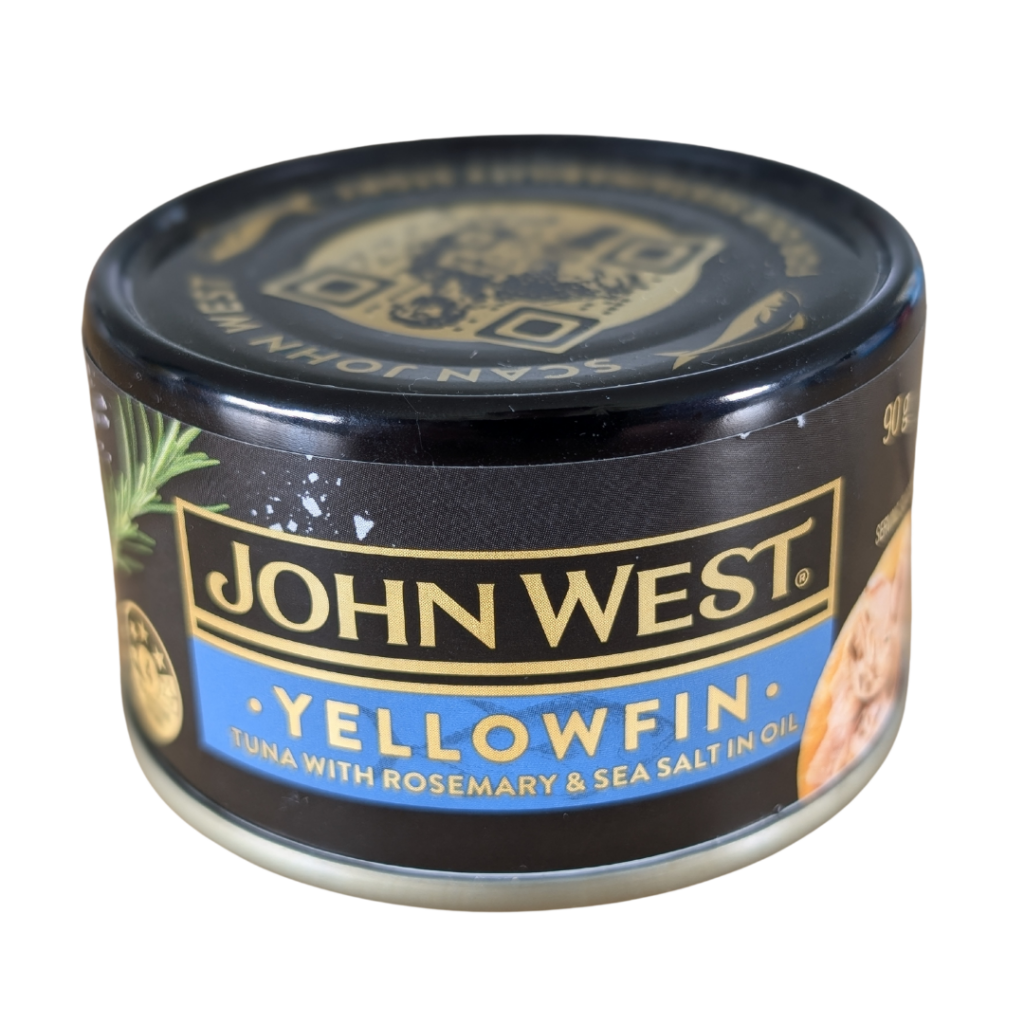
This yellowfin tuna is caught from a healthy population in the Western Central Pacific Ocean or Eastern Central Pacific Ocean, using FAD-free methods that can have a moderate impact on endangered marine wildlife or the wider ecosystem.
Woolworths Tuna
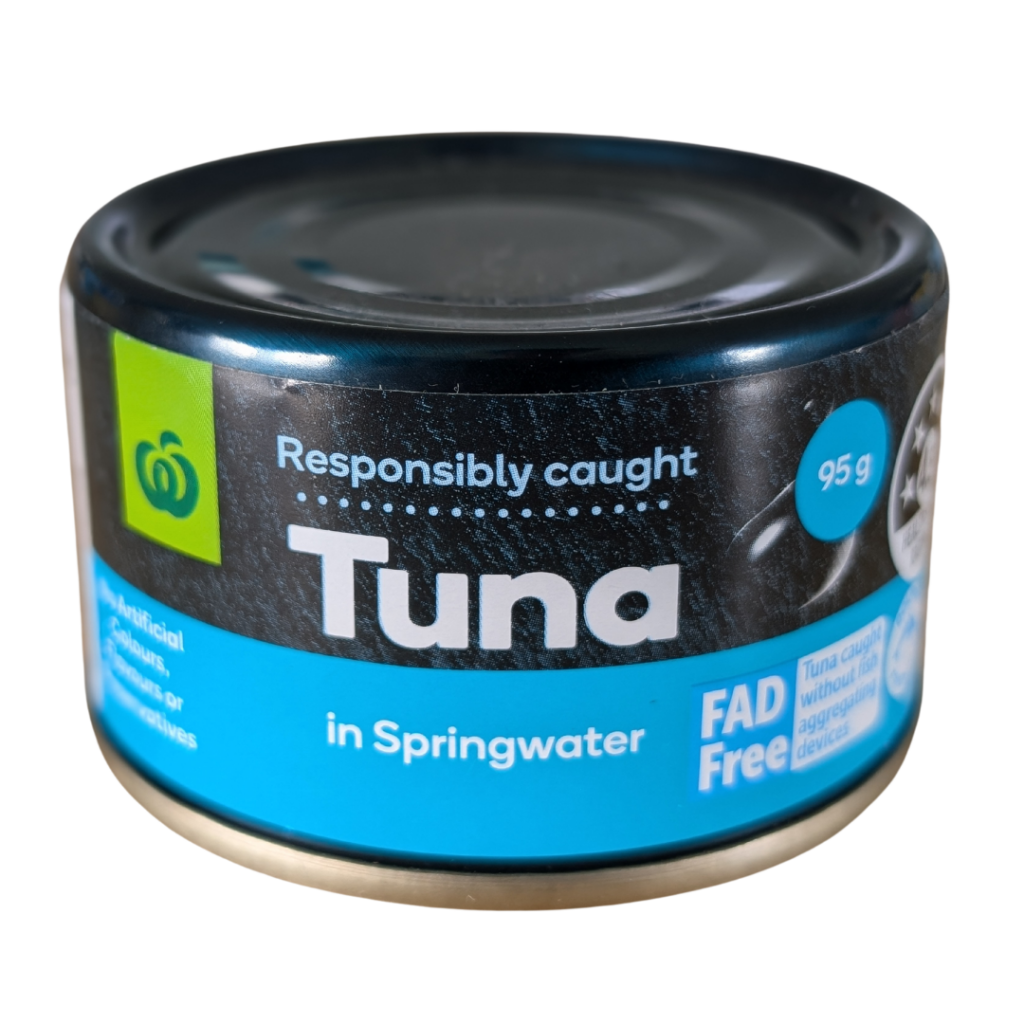
This skipjack tuna is caught from healthy populations in the Pacific Ocean, using FAD-free purse seine methods that can have a moderate impact on endangered marine wildlife or the wider ecosystem.
Woolworths Yellowfin
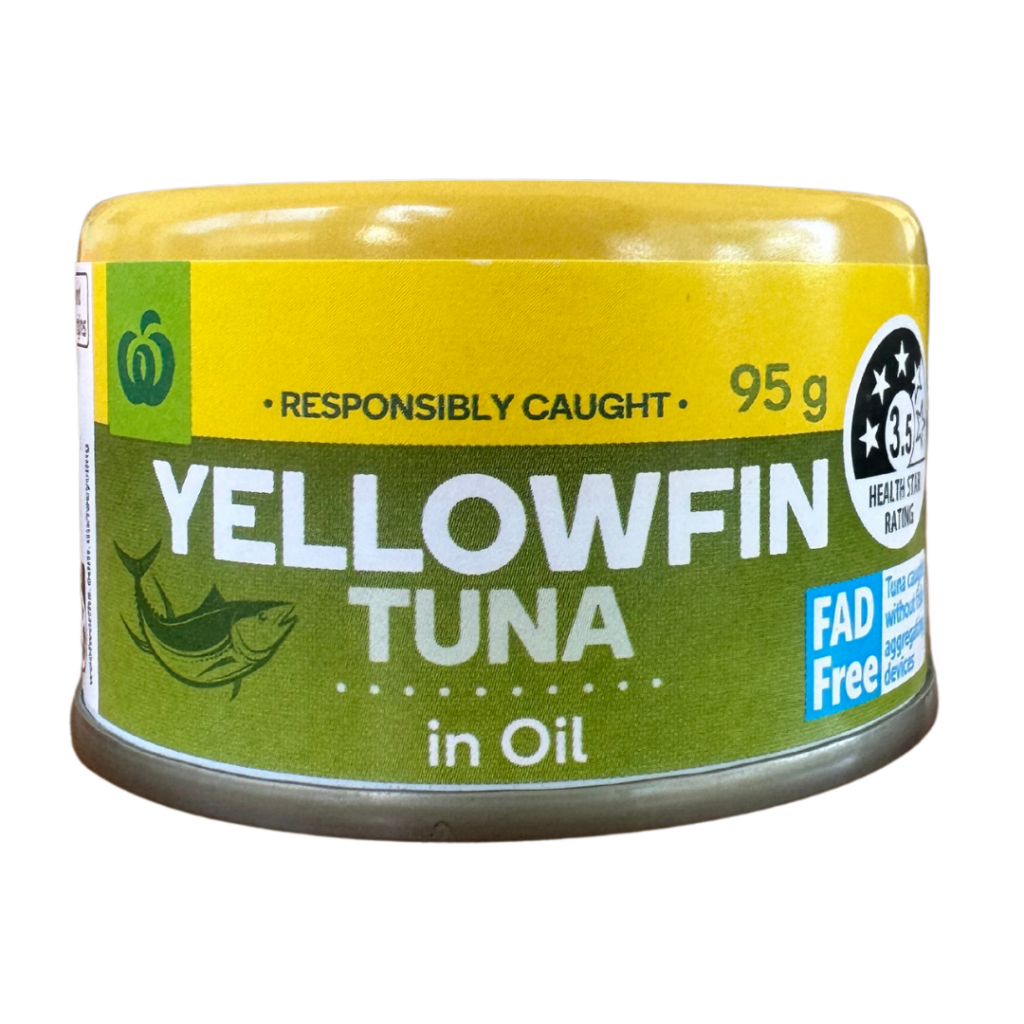
This yellowfin tuna is caught from healthy populations in the Pacific Ocean, using FAD-free methods that can have a moderate impact on endangered marine wildlife or the wider ecosystem.
Woolworths Essentials
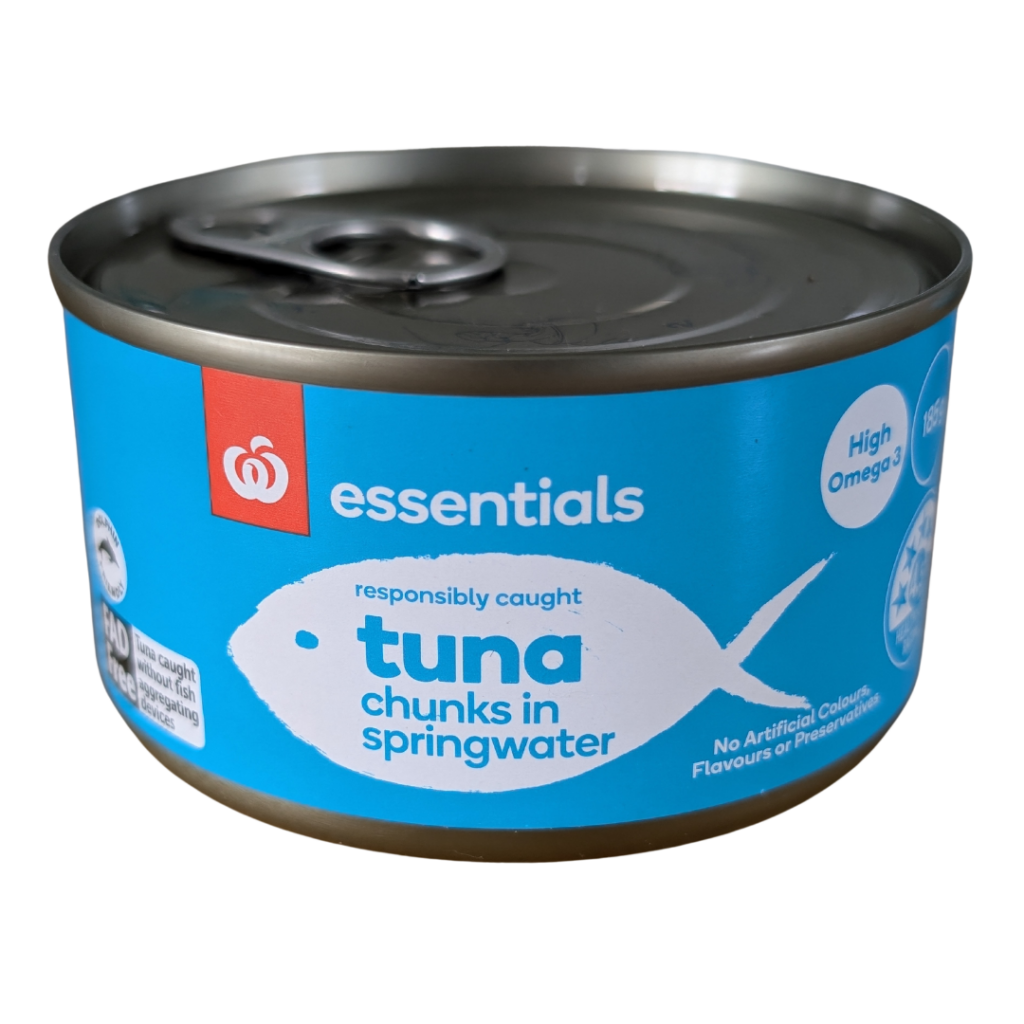
This skipjack tuna is caught from healthy populations in the Pacific Ocean, using FAD-free purse seine methods that can have a moderate impact on endangered marine wildlife or the wider ecosystem.
Coles Tuna
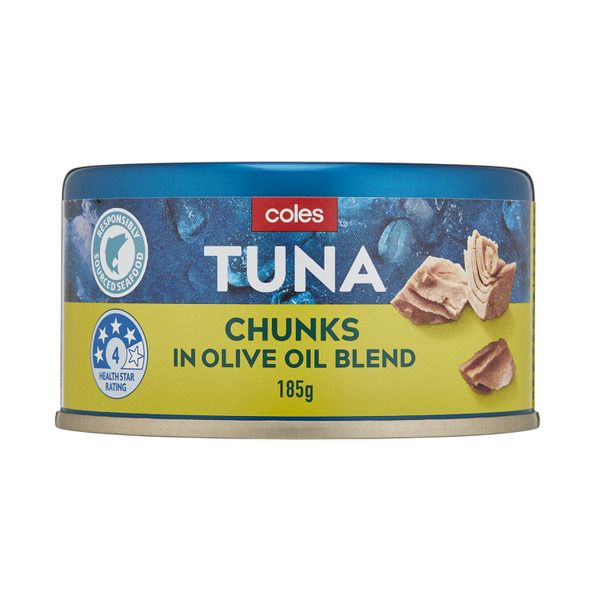
This skipjack tuna is caught from a healthy population in the Western Central Pacific Ocean, using FAD-free purse seine methods that can have a moderate impact on endangered marine wildlife or the wider ecosystem.
Coles Simply Tuna
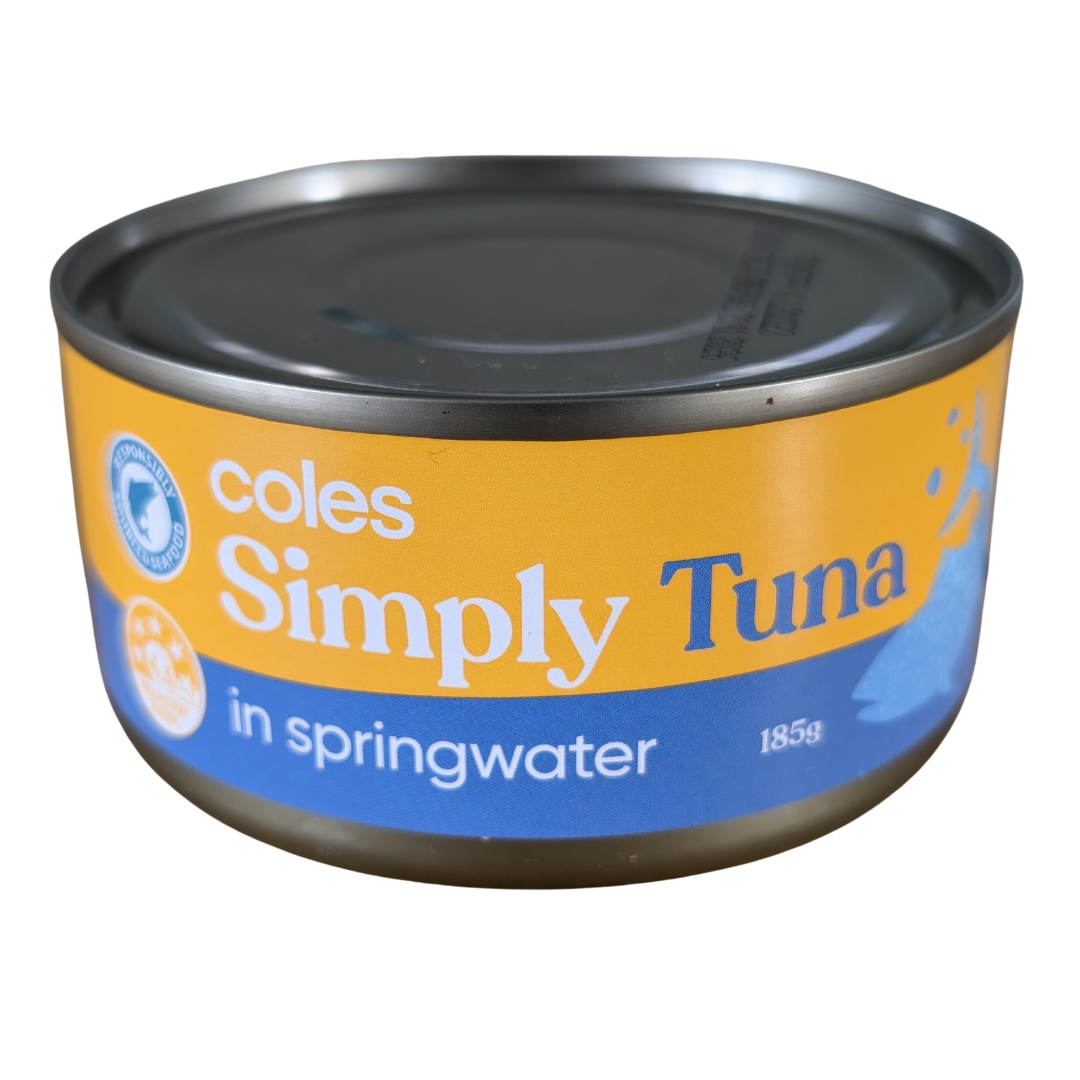
This skipjack tuna is caught from a healthy population in the Western Central Pacific Ocean, using FAD-free purse seine methods that can have a moderate impact on endangered marine wildlife or the wider ecosystem.
Coles Pacific Yellowfin Tuna
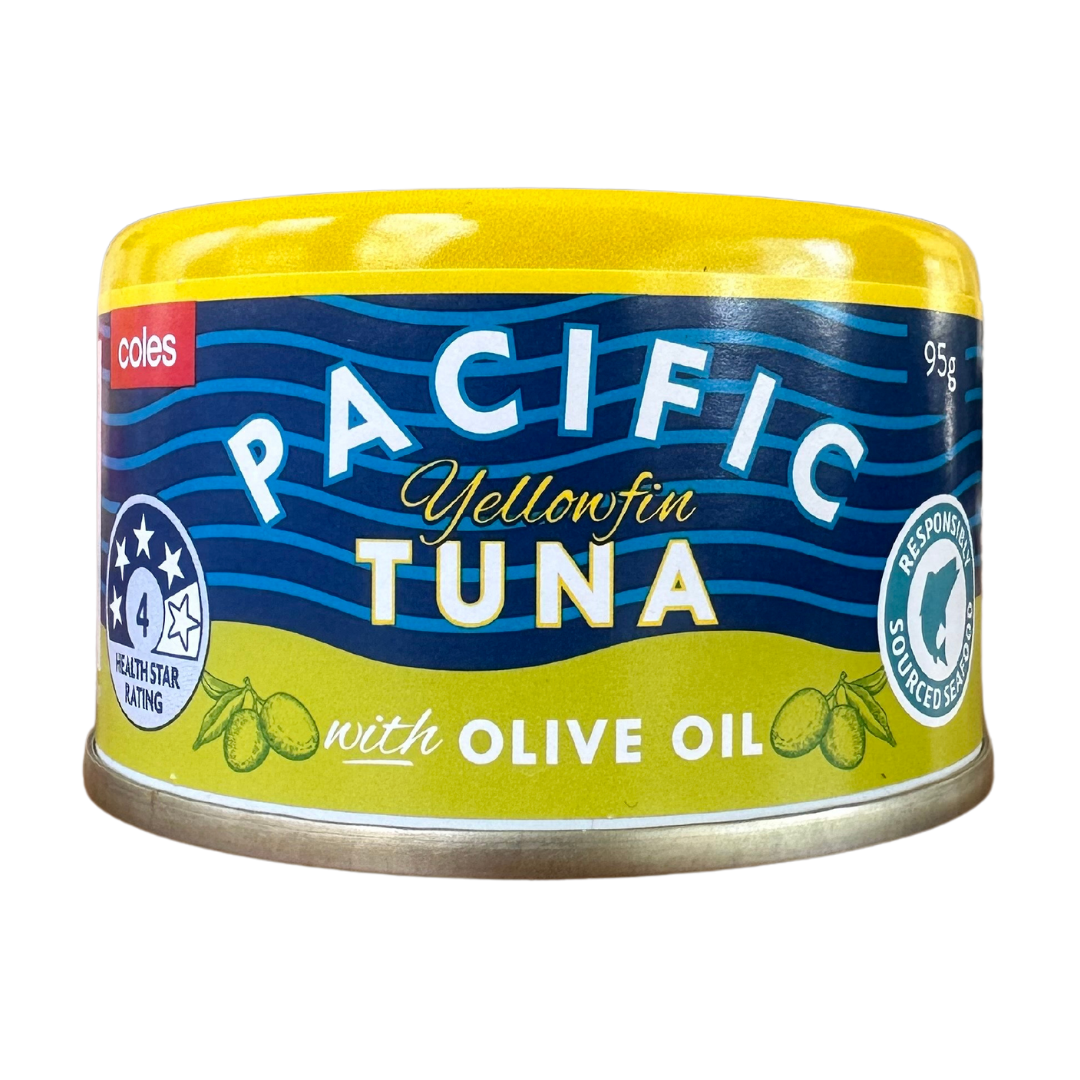
This yellowfin tuna is caught from a healthy population in the Western Central Pacific Ocean, using FAD-free purse seine methods that can have a moderate impact on endangered marine wildlife or the wider ecosystem.
Wild Tides
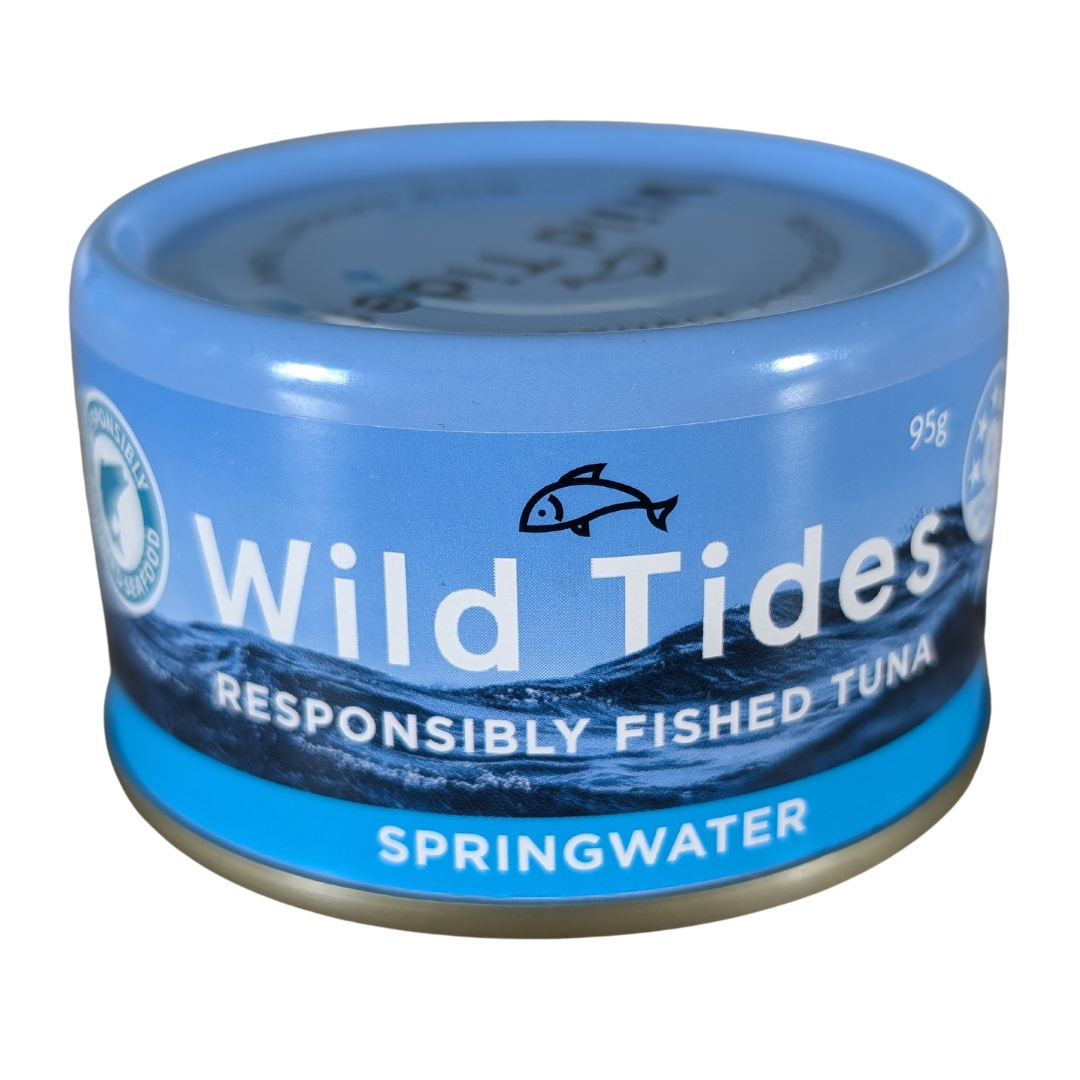
This skipjack tuna is caught from a healthy population in the Western Central Pacific Ocean, using FAD-free purse seine methods that can have a moderate impact on endangered marine wildlife or the wider ecosystem.
Community Co
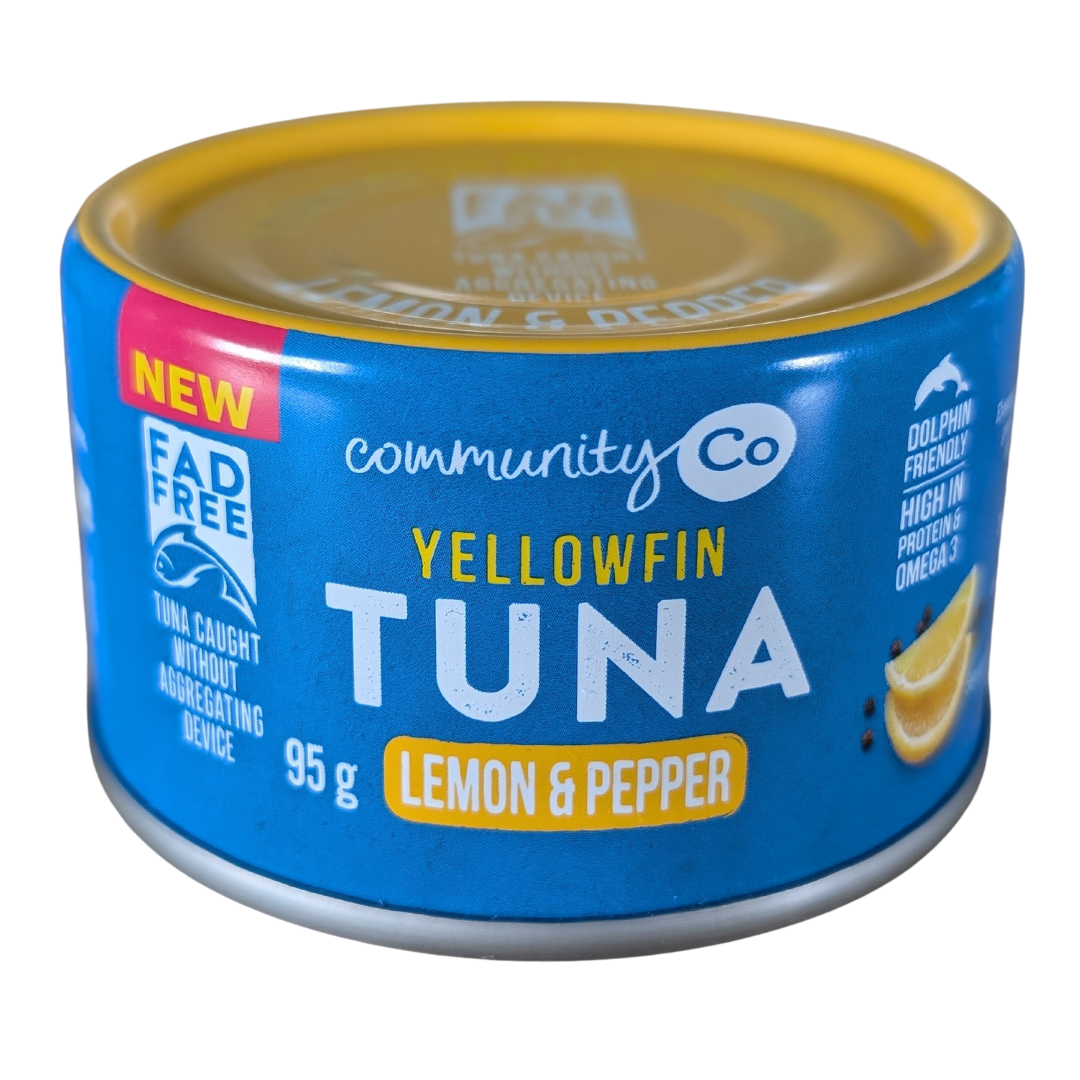
This yellowfin tuna is caught from a healthy population in the Western Central Pacific Ocean, using FAD-free methods that can have a moderate impact on endangered marine wildlife or the wider ecosystem.
Black and Gold
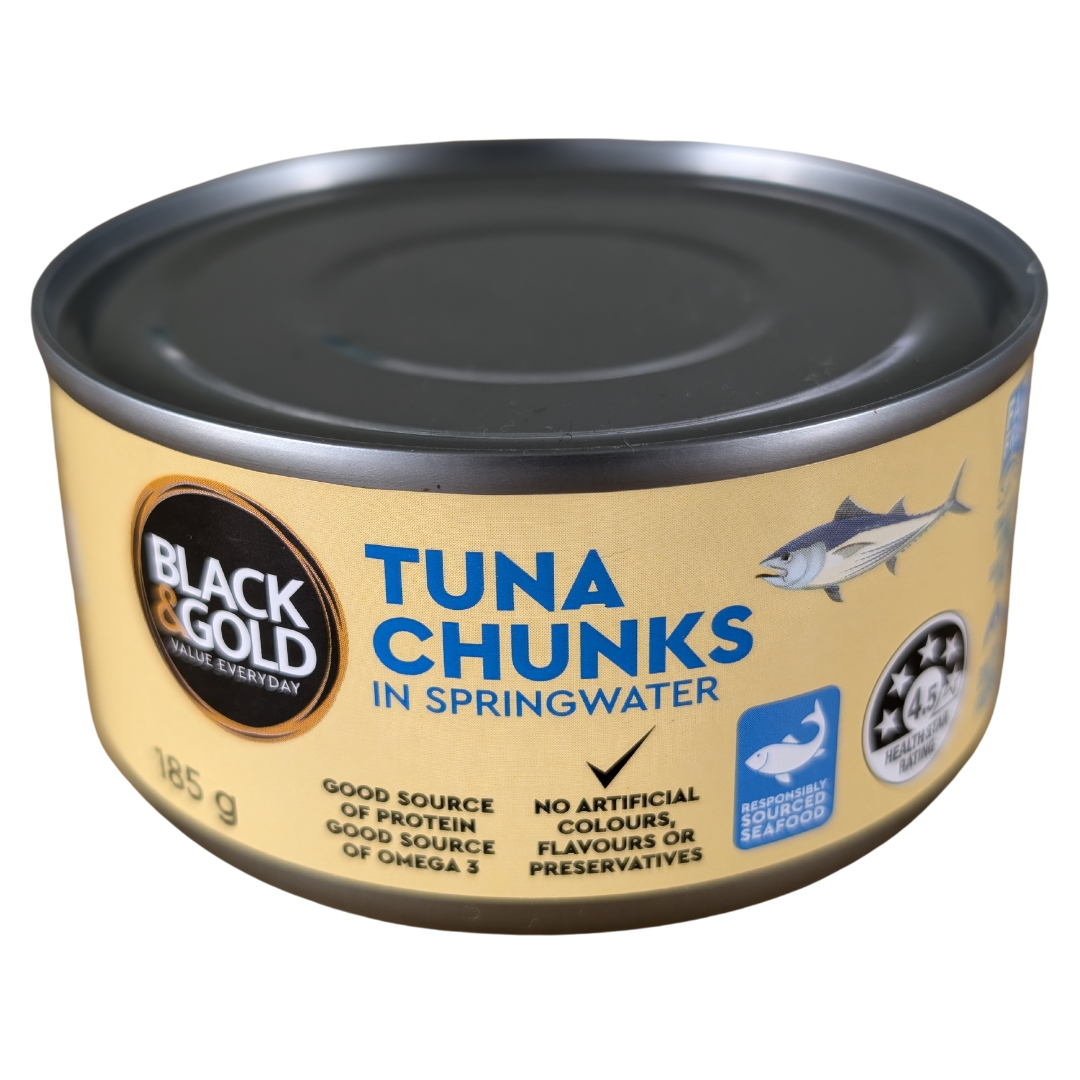
This skipjack tuna is caught from a healthy population in the Western Central Pacific Ocean, using FAD-free methods that can have a moderate impact on endangered marine wildlife or the wider ecosystem.
Greenseas
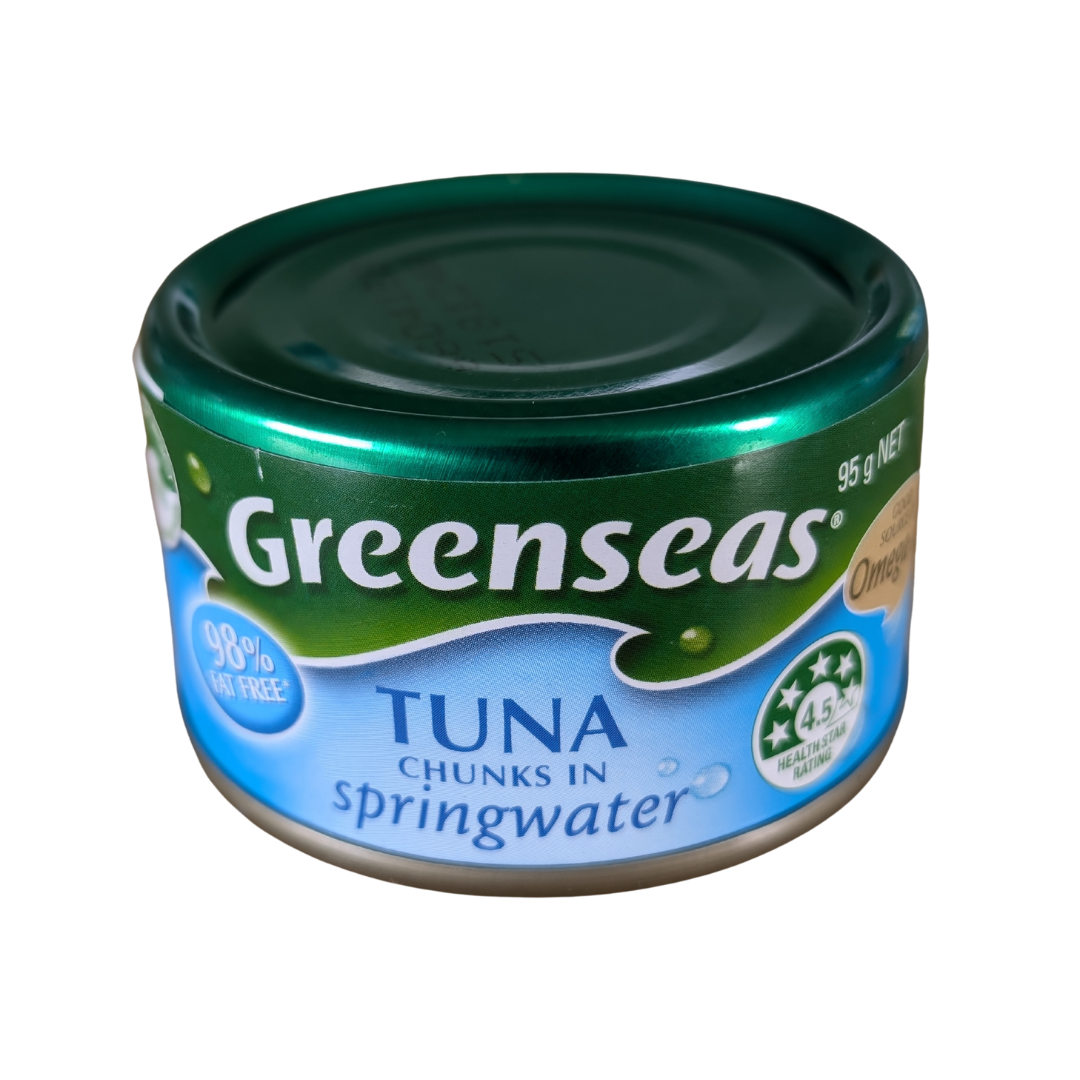
This skipjack tuna is caught from a healthy population in the Western Central Pacific Ocean, using FAD-free purse seine methods that can have a moderate impact on endangered marine wildlife or the wider ecosystem.
SAFCOL Responsibly Fished Tuna
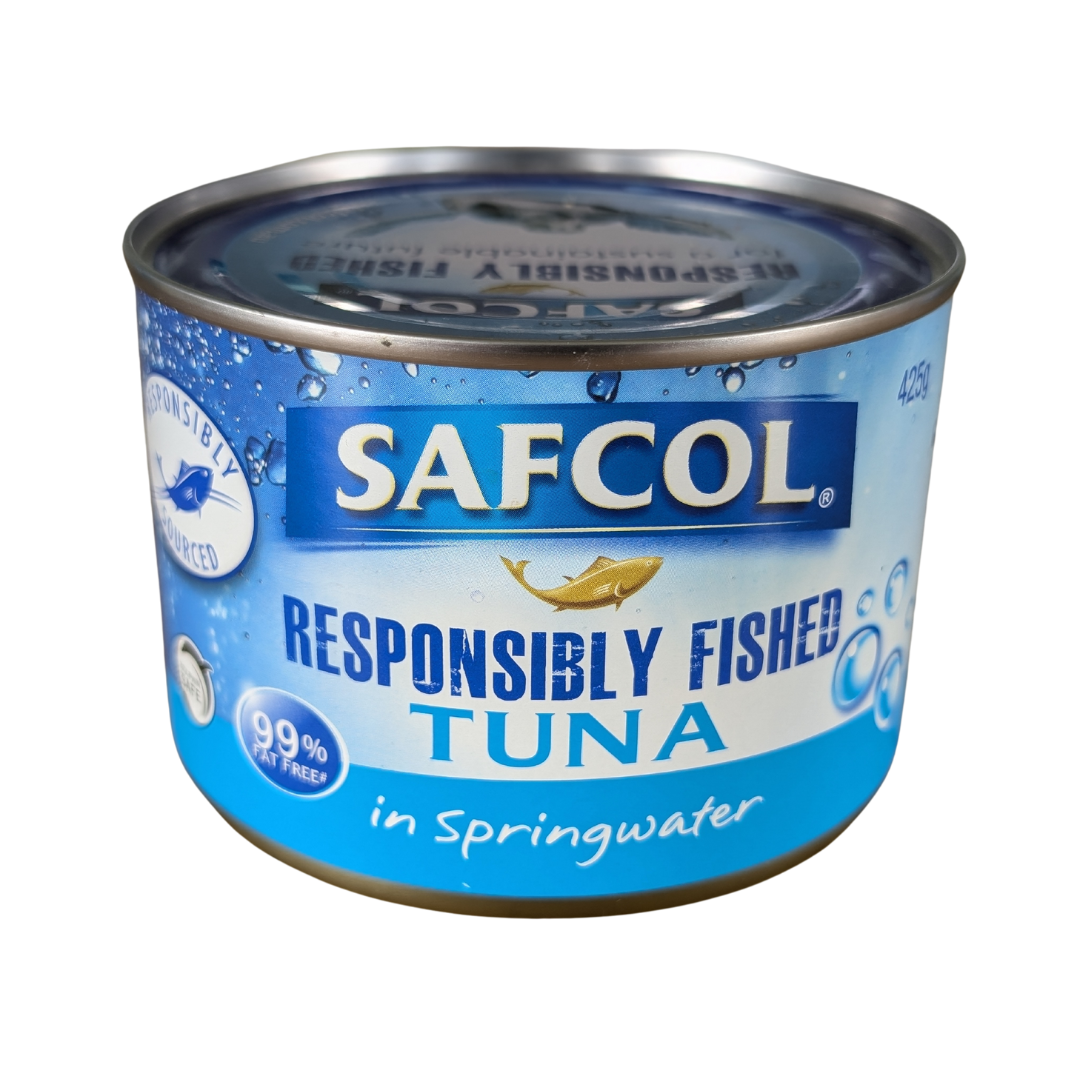
This skipjack tuna is caught from healthy populations in the Pacific Ocean, using FAD-free methods that can have a moderate impact on endangered marine wildlife or the wider ecosystem.
ALDI Portview
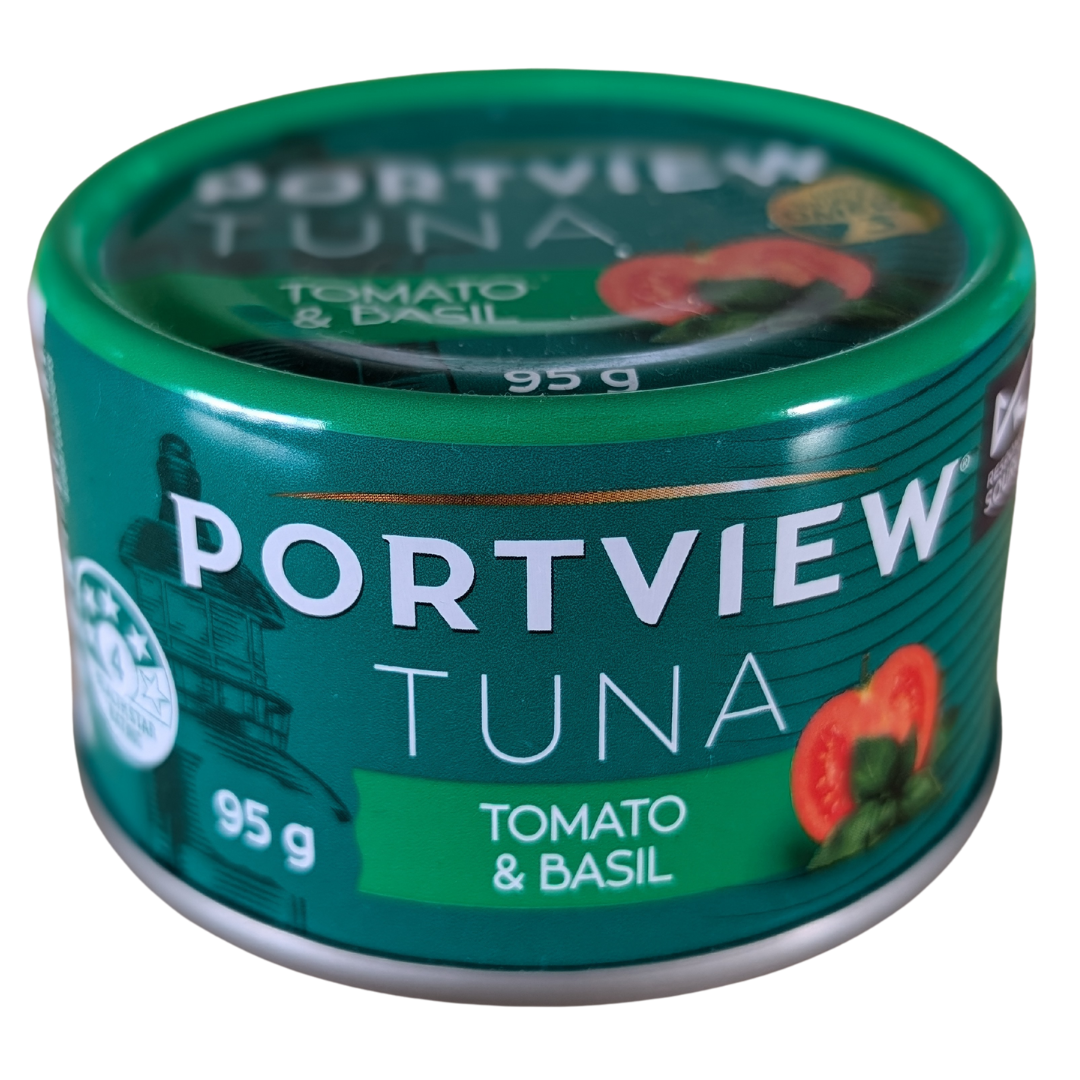
This skipjack tuna is caught from a healthy population in the Western Central Pacific Ocean, using FAD-free methods that can have a moderate impact on endangered marine wildlife or the wider ecosystem.
Red
ALDI Ocean Rise *FAO 57 or FAO 51
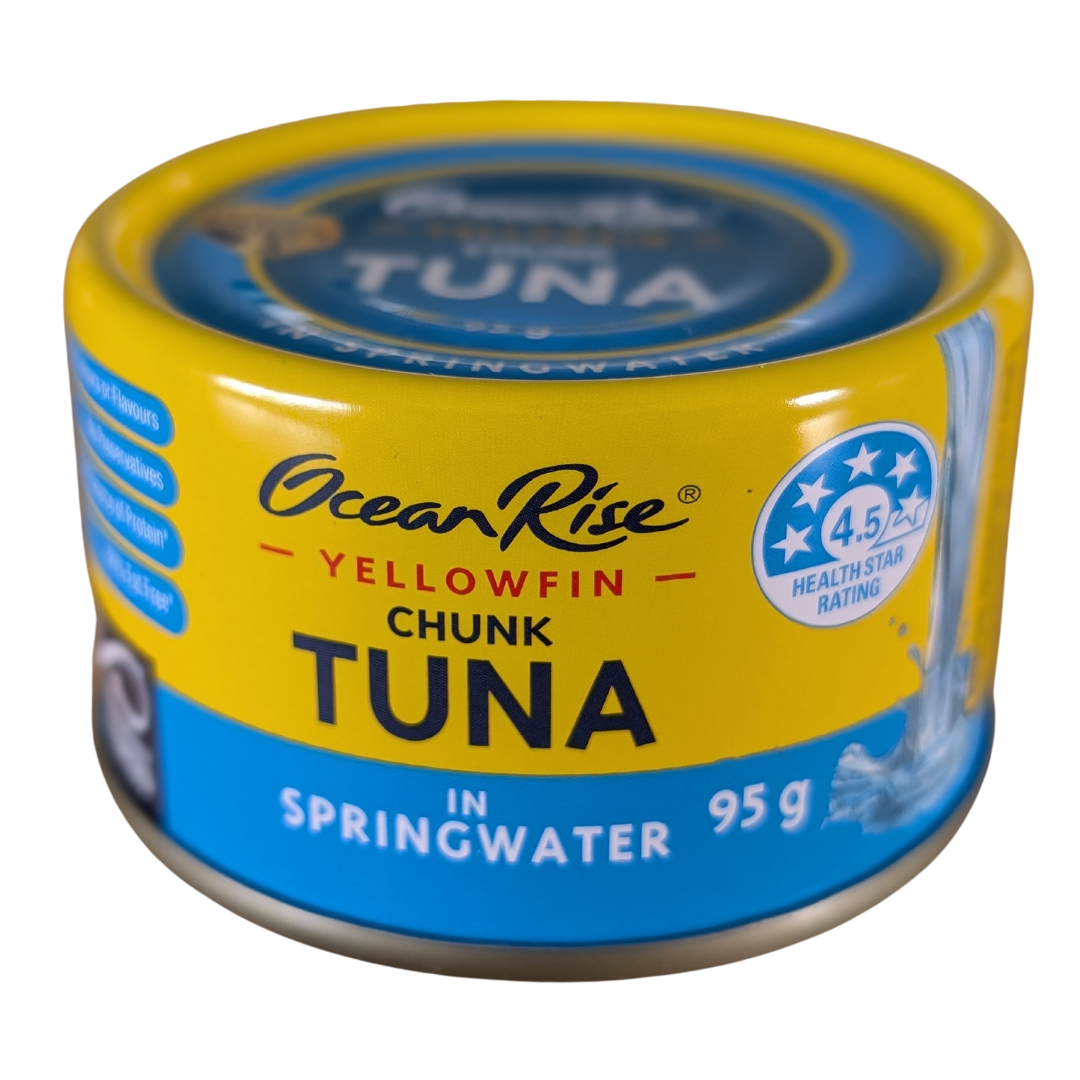
*This ranking only applies to products containing tuna caught within FAO area 51 or 57. You can find this information on the bottom of the can.
While this product uses line fishing methods that have a minimal impact on other marine wildlife or the wider ecosystem, it contains tuna caught from a population in the Indian Ocean that is overfished and subject to overfishing.

Sirena *FAO 57 or FAO 51
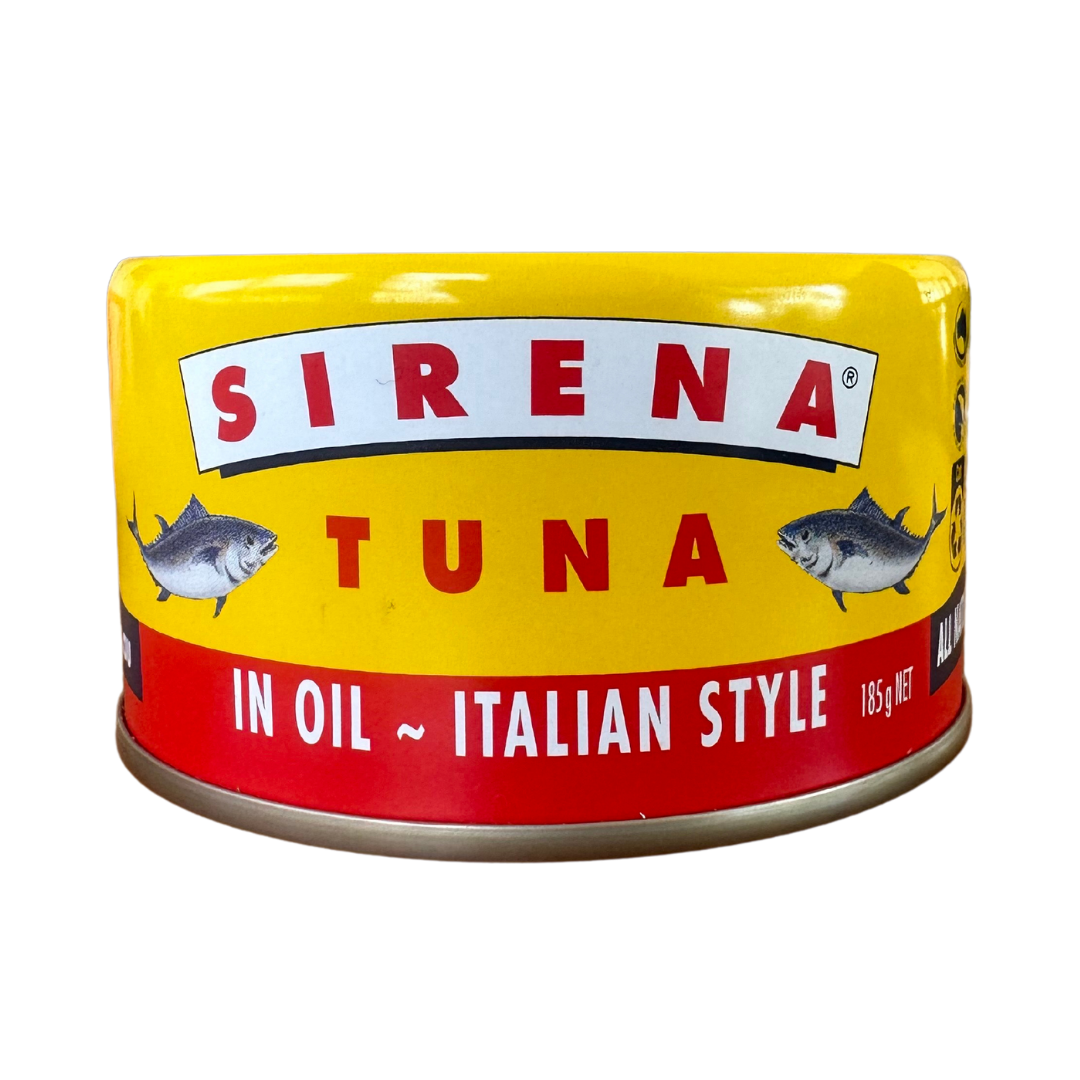
*This ranking only applies to products containing tuna caught within FAO area 51 or 57. You can find this information on the bottom of the can.
While this product uses line fishing methods that have a minimal impact on other marine wildlife or the wider ecosystem, it contains tuna caught from a population in the Indian Ocean that is overfished and subject to overfishing.

The Rankings
Our guide considers three key elements. These are the health of the tuna population, the bycatch impacts in the fishery, and accessibility of information.
Population Health
Tuna are found all over the world and are grouped not only by species, but also by populations (known as ‘stocks’). Many tuna populations are depleted and more vulnerable to overfishing, so it is important to identify what species you’re eating, and where it was caught.
Bycatch impacts in the fishery
Some fishing methods are known to have greater impacts on surrounding wildlife than others. For example, the use of Fish Aggregating Devices (FADs) is known to increase the incidental catch of sharks, marine turtles, and juvenile tuna.
Accessibility of information
Without information, we are unable to properly determine a product’s sustainability. Sometimes information about what species it is, as well as where and how it was caught is not publicly available, either on the can, on a brand’s website or through a QR code. In many cases, we’ve been able to access that information directly from the brand. To the best of our knowledge, this information is accurate at the point of publishing.
Other Considerations
Illegal, unreported and unregulated (IUU) fishing
Illegal, unreported and unregulated (IUU) fishing is a threat to healthy oceans all around the world. The term ‘IUU fishing’ refers to a broad range of issues, such as fishing in protected areas, fishing without permission, underreporting catches or not reporting them at all. Each year, IUU fishing accounts for an estimated US$10 billion to $23.5 billion (AU$15 billion to 35 billion) in lost revenue to legitimate fisheries.
IUU fishing is known to occur in tuna fisheries. In the Pacific region, vessels have been caught using unauthorised fish aggregating devices (FADs) and underreporting tuna catch. Sometimes, tuna are transferred between boats at sea, a practice called transshipment. When these handoffs aren’t authorised, illegal tuna catches get mixed in with legitimate ones, ultimately ending up on our plates. The Indian Ocean–where many tuna stocks are overfished–is the world’s second biggest producer of tuna, but IUU fishing made up nearly half of all tuna fishing effort between 2016 and 2021!
IUU fishing harms marine ecosystems, with vessels catching undersized fish, retaining protected species and using destructive fishing practices. When fishers misreport or underreport catches, this makes it difficult for authorities to manage stocks at a sustainable level. As a result, the risk and occurrence of IUU fishing must be taken into account when evaluating the true sustainability of the tuna we eat. This is something that we will address in the next version of this guide.
Modern slavery and human rights
Sadly, the tuna we eat isn’t always produced ethically. Worker abuse, human rights violations, modern slavery and even murder have been reported in tuna fisheries. In some cases, workers are trafficked aboard fishing vessels and forced to work in inhumane conditions for little or no pay, for years at a time. In 2022, an estimated 128,000 people were trapped in forced labour in the world’s fisheries.
The western tropical Pacific produces 60% of the world’s tuna, and much of Australia’s. While many tuna companies operating there have taken steps to ensure their tuna is free of slavery and human rights abuses, there is still much work to do. Certification schemes, such as those operated by the Marine Stewardship Council (MSC), do not take into account human rights and slavery when declaring a tuna fishery to be sustainable.
Australians deserve to know if their tuna was caught by slaves. In the next version of the guide, we will assess the risk of human rights abuses in the tuna we see on our supermarket shelves.
Labelling
When seafood products are clearly labelled, consumers can make informed choices about what they’re buying. The most important information to include on a label is what species it is, where it was caught, and how it was caught. Canned tuna has some of the best labelling practices compared to other seafood products in Australia, but some labels still don’t answer these three basic questions. Simple, specific, and accurate labelling is essential in allowing Aussies to know what they’re buying and supporting.
This guide would not be possible without the hard work of several groups. Our sincere thanks to the International Seafood Sustainability Foundation for their work on tuna stocks and Monterey Bay Aquarium’s Seafood Watch for their work on bycatch impacts.